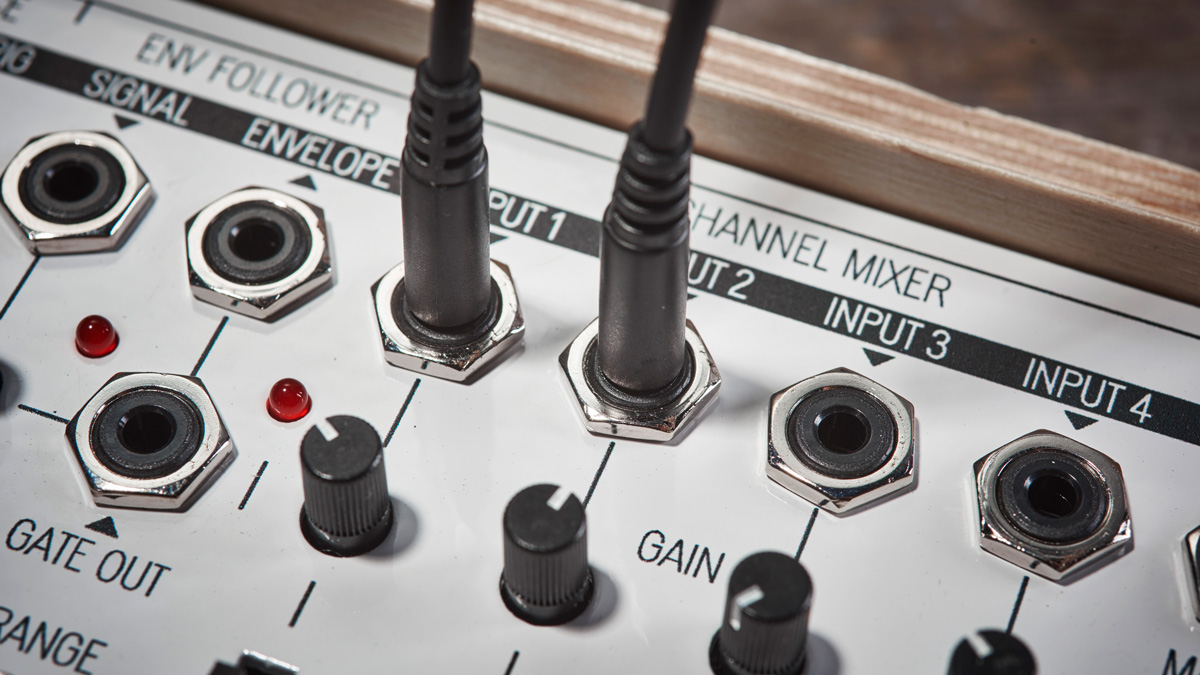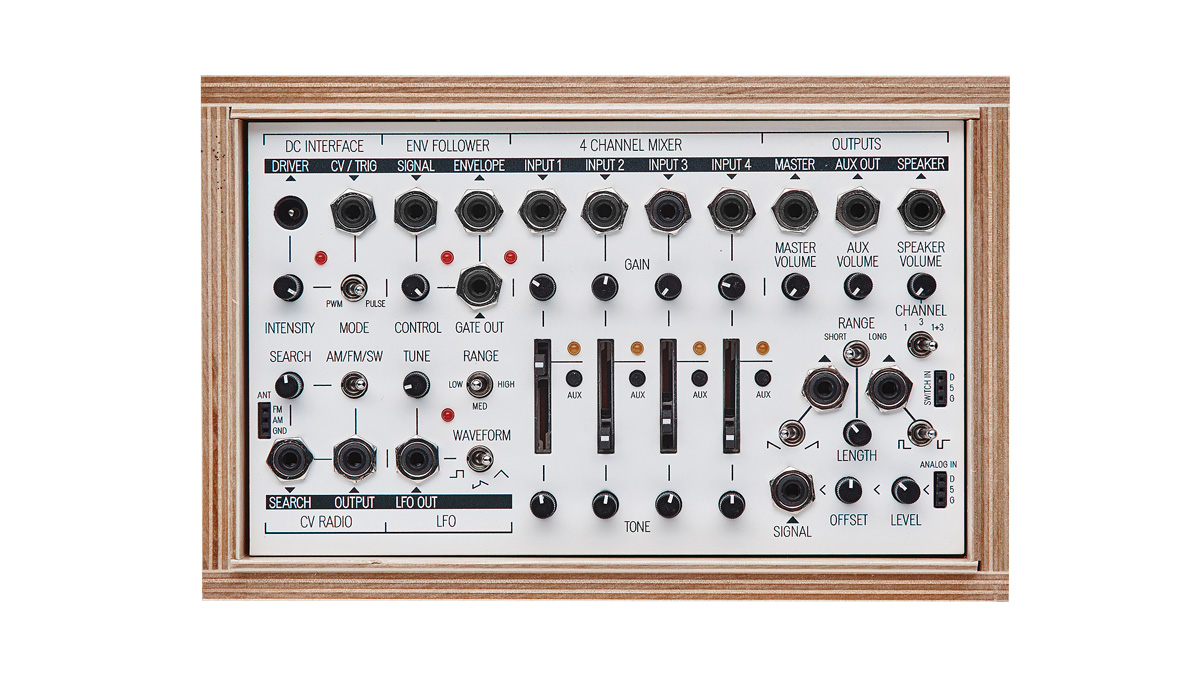MusicRadar Verdict
At its core, the Field Kit is fantastic for experimentation and fun, and adding a few simple components turns it into a great tool for creating unusual sounds and textures from the world around you.
Pros
- +
Self-contained experimental playground that interfaces with a wide range of devices.
- +
Circuits can be tweaked to alter the responses of some modules.
Cons
- -
No option for fully portable built-in battery power.
- -
A few additional CV control options would be welcome.
MusicRadar's got your back
The Field Kit is best thought of as an electroacoustic music toolbox, where everyday objects can be used to create, or manipulate, sound.
The unit itself comes in the form of a metal panel (in the usual Koma livery) laden with sockets, sliders and knobs embedded in a plywood case. Even before you get plugging, this is a thing of beauty - the ultimate in geek chic aesthetic.
A kit version (with all the nasty SMT components pre-installed) is available (and will save you 50 euros), and a Eurorack panel is available for those wanting to expand their modular rig. Besides the Output Section, which is hardwired to the internal mixer, the Field Kit is split into 7 functional blocks.
Occupying the centre of the unit is the aforementioned four-channel mixer. Each channel features a gain stage followed by a passive tilt EQ, Aux send and mix level fader. Master and Aux outputs have their own level knobs, with an additional Speaker out (for driving 8-ohm loads) that can derive its signal from channels 1, 3 or both together.
The EQ is centred on a frequency of 600Hz, though, like many aspects of the circuitry, can be tweaked with a few (small) component changes.
The manual includes a wealth of knowledge on making these changes, alongside many others, and at over 100 pages has a wealth of information on using, or abusing, your Field Kit.

Next up is the Radio, which covers AM, FM and SW bands. No antennas are included, but these can be fashioned from something as simple as a small loop of wire, and hooked-up via a small three-way header. The Search knob normally acts as a manual tuning control, though you’ll also find an input to alter the radio frequency under CV control (whereupon the Search knob acts as a CV attenuator). This is great for exploring unpredictable radio-glitch effects, but there numerous other possibilities.
More familiar territory can be found back in the LFO and Envelope Follower sections. The LFO works over three selectable ranges - from super-slow to audio rates - and with square, triangle or combination waveforms. The Envelope Follower derives a slowly moving DC voltage from a fast moving AC source. There’s also a (positive voltage) Gate output, triggered once the input is higher than 1V.
A kit version (with all the nasty SMT components pre-installed) is available (and will save you 50 euros), and a Eurorack panel is available for those wanting to expand their modular rig
LFO rate ranges and envelope follower response speed can be shifted permanently by changing internal capacitor values. Things take a more unusual turn with the DC Interface, which can be used drive motors, buzzers, solenoids and many other devices. CV control is of course included.
The Signal Interface then takes care of things on the input side, with the ability to manipulate and convert switch signals to pulses and turn sensor signals to CV (with adjustable gain and offset). The optional Expansion Pack is an ideal way to get things going, as it includes contact springs, mics, cables, a speaker, solenoid, and a few other useful bits.
If you ever wanted to try building a spring reverb, mic up a cutlery draw, or create a musical automaton, then the Field Kit is for you.
With its latest free update, Ableton has finally turned Note into the app I always wanted it to be
Technically capable, but struggle to make your tunes sound musical? 5 simple music theory hacks to make your tracks stand out
"Despite its size, it delivers impressive audio quality and premium functions as well as featuring a good selection of inspired sounds": Roland GO:Piano 88PX review










